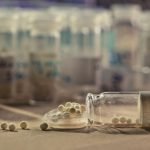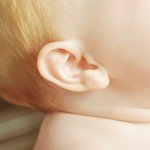Vaccine Spotlight: Two New Vaccines Approved for Use in Pediatrics
Nathan Vitaro, NMD
Having a largely pediatric population base in my own practice, I have found there is no other related issue that incites as much controversy as does vaccinations. Parents have a lot of questions, reservations, opinions, and decisions to make about complying with the nation’s recommended immunization schedule, which seemingly grows in size with each new year. Advocates of the schedule cite major improvements in public health with the eradication or decreased incidence of specific diseases and revere vaccinations as a marvel of modern medicine. Opposers of the vaccine policy raise questions regarding the safety and efficacy of the vaccines, linking some with the growing epidemic of neurological diseases (including autism spectrum disorders, attention deficit hyperactivity disorder, and learning disabilities), as well as the increased incidence in other illnesses such as sudden infant death syndrome, asthma, and diabetes. Based on my own clinical experience, I think most naturopathic patients fall somewhere in between and grapple with weighing out the risks versus benefits with only their child’s best interest at heart. Recently, our patients’ arduous process of deciding if vaccinations are right for their families has become further complicated with the addition of two new vaccines, RotaTeq and Gardasil, which have been approved by the Food and Drug Administration (FDA) this year. The following is intended to provide a brief overview of both vaccines as well as a short commentary on each.
RotaTeq, manufactured by Merck and Co, Inc., is a live virus vaccine that is designed for the prevention of rotavirus-associated illness. Rotavirus is the leading cause of severe acute gastroenteritis in infants and young children, with a peak incidence at 6 to 24 months. Without proper medical attention, infant diarrhea can lead to serious complications mainly due to dehydration. The vaccine is administered orally in three divided doses recommended beginning at 6-12 weeks of age, with subsequent dosing at 4-10 week intervals. The clinical trials revealed the primary efficacy against any grade of severity of rotavirus illness through the first season after vaccination was 72.5%-74%. If a child had received at least one dose but not all three, the efficacy was 58.4%-60%. For prevention of severe gastroenteritis through the first season, the efficacy was 98%-100% and 96.4%-100% for fully vaccinated subjects and subjects who received at least one dose, respectively. After a second rotavirus season, efficacy against any grade of severity of infection was 71.3%. The efficacy of the vaccine beyond a second season was not evaluated. Adverse events include vomiting, diarrhea, and irritability.
A previously developed rotavirus vaccine (RotaShield) by Wyeth Laboratories was withdrawn from the market in 1999 because of its association with an increased risk of intussusception. The Centers for Disease Control had recommended its universal use in infants 6 months before the vaccine was approved by the FDA in August of 1998. The clinical trials for RotaTeq revealed no such associated risk.
The vaccine is prepared without preservatives or thimerosal, but contains the following stabilizers: sucrose, sodium citrate, sodium phosphate monobasic monohydrate, sodium hydroxide, polysorbate 80, cell culture media, and trace amounts of fetal bovine serum.
Gardasil, also manufactured by Merck, is a noninfectious recombinant vaccine to be used for the prevention of human papillomavirus (HPV), the virus linked to cervical cancer and genital warts. The vaccine works to prevent infection with HPV types 6, 11, 16, and 18, which account for approximately 70% of cervical cancers (as well as precancerous cervical dysplasias) and 90% of genital wart cases. The vaccine is administered by a series of three injections, the second given 2 months after the first, and the third given 6 months after the first. The vaccine is approved for use in females aged 9-26. There were four clinical trials (with a combined n=20,541) that included women aged 16-26 at time of enrollment. The median duration of follow-up in the four studies ranged between 2 and 4 years. The combined data showed the efficacy of Gardasil was 95.2%-100%. An immunogenicity study was conducted to measure the immune response of vaccinated younger adolescents aged 9-17 compared with vaccinated women aged 18-26. Both groups maintained equal seropositivity to anti-HPV 6/11/16/18. Based on this, the efficacy of Gardasil use in 9- to 15-year-old girls is inferred. Common adverse reactions include pain, swelling, and erythema at injection site, and fever. Rare adverse events include juvenile and rheumatoid arthritis (0.025%) and general arthritis (0.051%). The vaccine is not useful in treating those individuals already infected with HPV.
Gardasil contains approximately 225 mcg of aluminum per 0.5-ml dose. The vaccine also contains sodium chloride, L-histidine, polysorbate 80, sodium borate, and water.
From a naturopathic clinical standpoint, I would like to provide some commentary on both of the new vaccine developments. Please understand that the following discussion is my opinion only, and in no way is encouraging avoidance of any vaccine without appropriate consideration and understanding of risk. I still maintain that our patients’ option to vaccinate or not vaccinate their children is a very personal choice that should be met with respect, support, and education. Unfortunately, I have had several families dismissed from allopathic pediatric practices because of their refusal to vaccinate. I also have had parents of patients who have had negative experiences from both allopathic and naturopathic providers who offered little help and a lot of judgment. Our role as physicians is to answer questions, provide information, and ascertain open-minded dialogue in regards to the issue; it is not to persuade, convince, or inappropriately influence their decision to be in accordance with your own beliefs or reasoning.
In my opinion, the prevention of rotavirus in children who are under naturopathic medical care with a vaccine may seem marginally appropriate, depending on the individual. In developing nations where the sequelae of rotavirus infection is less likely to be controlled, the vaccine could be used with much greater societal gain. This is not to marginalize the number of hospitalizations that take place here in the United States (~50,000) as a result of rotavirus. Approximately 20 to 60 children each year die from complications of rotavirus. However, children under regular naturopathic care that develop diarrhea can be readily treated with general hydration tactics, dietary intervention, immune support, homeopathy, and probiotics. Probiotics have continually been shown to decrease the course of viral diarrhea. Of course, it is equally essential that parents of such children are reliable reporters of symptoms. Many parents tend to treat at home without medical guidance. This can be especially problematic in infant diarrhea as onset of dehydration can happen quickly. Your patients must know when to call for acute care. Breastfed children are less likely to experience severe gastroenteritis from rotavirus infection as long as they are currently breastfeeding. It is important to know that the vast majority of the population is infected with rotavirus before age 5, which is typically a self-limited condition. To its credit, the vaccine is given orally correlating with the natural route of transmission (fecal-oral), which I think is advantageous immunologically. However, long-term effects remain unknown and the clinical trials did not extend beyond 2 years. Also, the dosing of rotavirus coincides with the hepatitis B, diptheria/tetanus/pertussis (DTaP), haemophilus (Hib), polio (IPV), and pneumococcal (PCV) vaccines. The growing number of vaccines that are administered concurrently is always a theoretical and valid concern in infants whose immune, gastrointestinal, and neurological systems are merely developing.
After reviewing information on Gardasil, I think that this vaccine holds promise. Considering cervical cancer is the second most common cancer in women worldwide and approximately 12,000 new cases are diagnosed each year in the United States, a vaccine that may help prevent this cancer by protecting against the development of premalignant conditions of cervical dysplasia is quite remarkable. A point of contention, however, is its use in girls as young as 9. The actual clinical trials of the vaccine only included females aged 16-26, so we do not know its safety and efficacy in girls aged 9-15. Some argue that giving a vaccine for a sexually transmitted disease in adolescence is condoning sexual activity at a young age. Personally, I think the greater intention is to vaccinate before a female becomes sexually active and this supersedes the notion of inadvertently condoning activity. This particular issue could be addressed with proper presentation of the medical reasoning to use the vaccine. However, I do have concerns that the vaccine contains aluminum, a documented neurotoxin. Of course, we also do not yet know long-term efficacy beyond 4 years. Clinical trials are still underway, as well as its efficacy in use in males. However, if the vaccine proves as effective as Merck has initially shown, I would respectfully recommend this vaccine to patients given the life-threatening nature of cervical cancer, and consider its benefits to outweigh its risks. I think anyone who sees women in practice knows how common a component of the medical history includes procedures such as loop electrosurgical excision procedure (LEEP), cone biopsy, cryotherapy, cervical laser treatments, or hysterectomies due to abnormal cervical cellular growth. A vaccine such as Gardasil may be able to dramatically decrease the conventional need for such treatments, and spare women the ramifications of such interventions. On the near horizon, Glaxo-Smith-Kline is planning to seek approval of Cervarix, another vaccine against HPV16 and 18, by the end of the year.
References
Centers for Disease Control and Prevention: www.cdc.gov
Gardasil Product Web site (Merck & Co, Inc.): www.gardasil.com
Mosby’s Drug Consult: www.mosbysdrugconsult.com
National Vaccine Information Center: www.909shot.com
Pharmaceutical Business Review: www.pharmaceutical-business-review.com
RotaTeq Product Web site (Merck & Co., Inc.): www.rotateq.com
U.S. Food and Drug Administration: www.fda.gov
WebMD: www.webmd.com
 Nathan Vitaro, NMD, is a graduate of Southwest College of Naturopathic Medicine and completed a 1-year postdoctoral training in quantitative EEG and neurofeedback. He has a private family practice in Scottsdale, Arizona, and serves as a medical consultant for bioidentical hormone replacement therapy for a local compounding pharmacy. .
Nathan Vitaro, NMD, is a graduate of Southwest College of Naturopathic Medicine and completed a 1-year postdoctoral training in quantitative EEG and neurofeedback. He has a private family practice in Scottsdale, Arizona, and serves as a medical consultant for bioidentical hormone replacement therapy for a local compounding pharmacy. .










